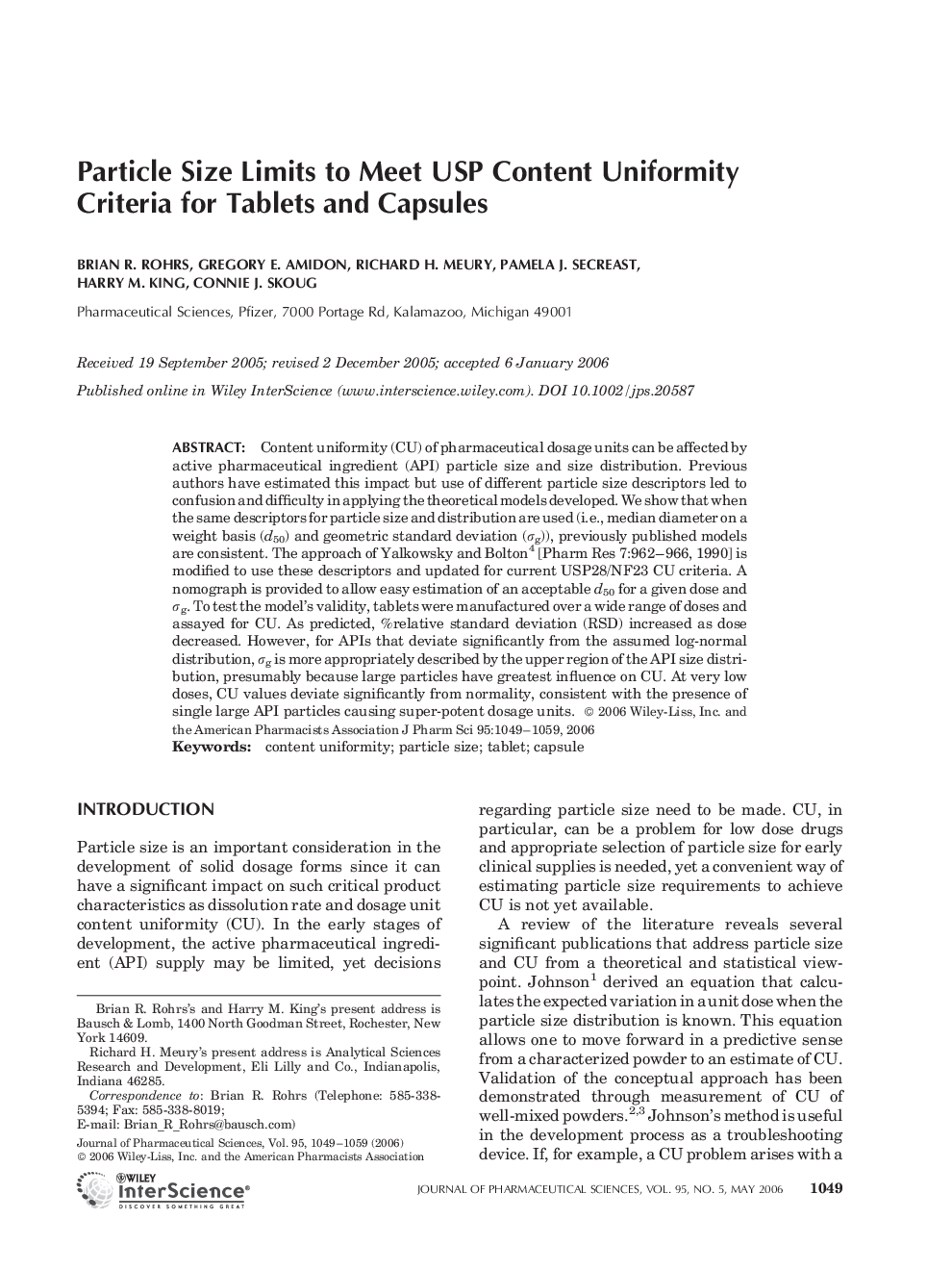| Article ID | Journal | Published Year | Pages | File Type |
|---|---|---|---|---|
| 2488126 | Journal of Pharmaceutical Sciences | 2006 | 11 Pages |
Abstract
Content uniformity (CU) of pharmaceutical dosage units can be affected by active pharmaceutical ingredient (API) particle size and size distribution. Previous authors have estimated this impact but use of different particle size descriptors led to confusion and difficulty in applying the theoretical models developed. We show that when the same descriptors for particle size and distribution are used (i.e., median diameter on a weight basis (d50) and geometric standard deviation (Ïg)), previously published models are consistent. The approach of Yalkowsky and Bolton4 [Pharm Res 7:962-966, 1990] is modified to use these descriptors and updated for current USP28/NF23 CU criteria. A nomograph is provided to allow easy estimation of an acceptable d50 for a given dose and Ïg. To test the model's validity, tablets were manufactured over a wide range of doses and assayed for CU. As predicted, %relative standard deviation (RSD) increased as dose decreased. However, for APIs that deviate significantly from the assumed log-normal distribution, Ïg is more appropriately described by the upper region of the API size distribution, presumably because large particles have greatest influence on CU. At very low doses, CU values deviate significantly from normality, consistent with the presence of single large API particles causing super-potent dosage units.
Related Topics
Health Sciences
Pharmacology, Toxicology and Pharmaceutical Science
Drug Discovery
Authors
Brian R. Rohrs, Gregory E. Amidon, Richard H. Meury, Pamela J. Secreast, Harry M. King, Connie J. Skoug,
